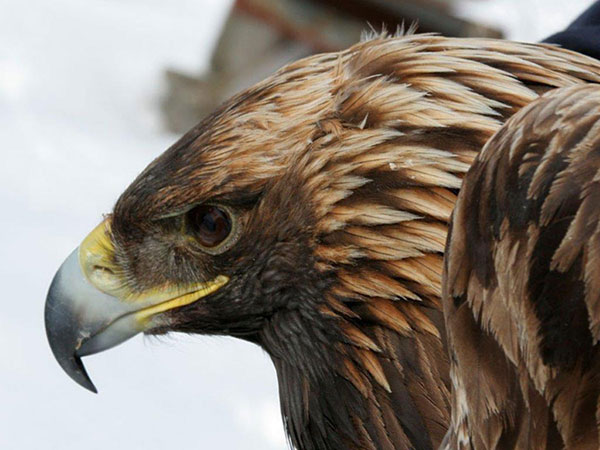In early February, I had the good fortune to be part of a small group of people who observed a Golden Eagle up close. This juvenile female raptor, later named Maxine, was captured early one morning and “processed” for the next few hours as part of a research project. Processing entailed weighing, measuring and fitting her with a lightweight telemetry unit. The telemetry unit will upload data describing Maxine’s travels as she migrates to and from New York to her summer range in Canada. Information from her and other eagles will help researchers understand the migration patterns of Golden Eagles in the eastern United States.

One reason for studying the migration and habits of Golden Eagles is the concern that they like to travel the same ridges which are ideal for siting wind turbines. When wind turbines are placed along these migration paths, the risk to eagles and other migratory birds of prey is great: collision mortality, habitat degradation, etc.. Data collected in recent years show a steady migration path between northeastern Canada and the southern Appalachians. Having reliable migration information will help researchers to work with developers and identify areas for wind energy which have minimal risk for migratory birds.
More information on this fascinating research project can be viewed on the Delaware-Otsego Audubon Society website: doas.us.
Helen McLean is the editor of The Belted Kingfisher, newsletter of the Delaware-Otsego Audubon Society.
